Toppling the dominant narrative with solutions-based news
Climate Action Now hosts an invigorating event highlighting progress on renewables in Chile, Uruguay, Namibia, Kenya and Pakistan. Plus, a weedy median update and Hopeful Headlines.
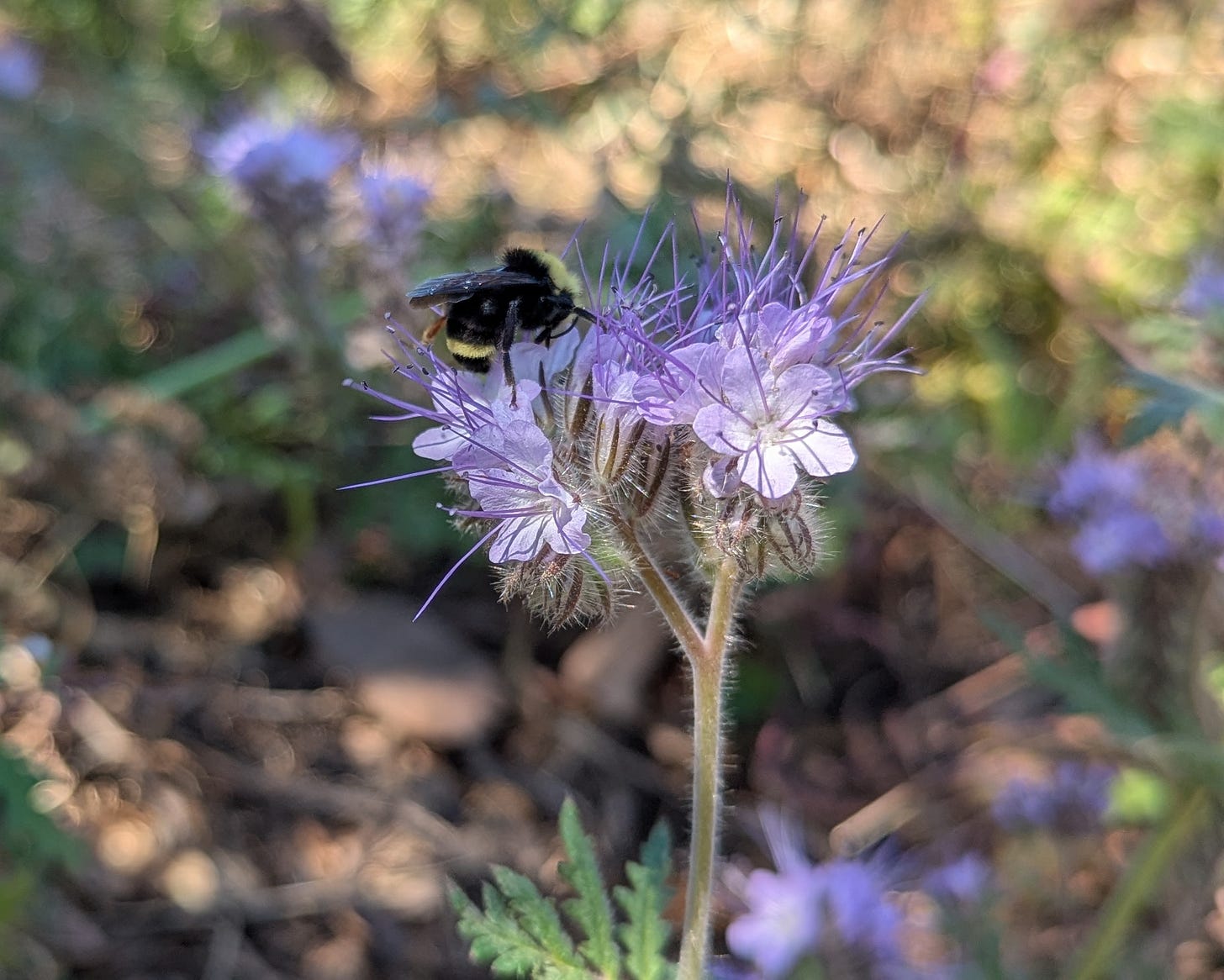
Chile, Uruguay and Namibia’s rapid transition to solar power lowered costs: Takeaway from Climate Action Now’s monthly hope chat
Climate Action Now is hosting a Monthly Dose of Climate Hope that I can’t recommend enough. On March 7, infinitely positive
hosted , a lecturer in environmental economics at Oxford University who writes “Net Zero Notes.” Dr. Srivastav reviewed several examples of rapid transitions to solar and renewable power from throughout the world.Chile lowered its electricity costs from $200 per megawatt-hour to $20 per megawatt-hour in only eight years by building out solar power.
Uruguay defied the odds, saved money, and avoided shocks from oil price spikes by building out wind. Now, one-third of their electricity comes from wind, and oil accounts for only 9 percent (a drop from 50 percent).
Namibia, population 2 million, defied the notion that “development and climate action are incompatible” by building out solar, bringing electricity to people who had never had it before, at only 2 cents per kilowatt hour.
“When someone tells you, ‘Energy transitions take a generation,’ or, ‘We can’t see change now,’ I say, ‘Just look at the past ten years,’” Dr. Srivastav said.
At the end of such a hopeful hour, we were all wondering: Why don’t we hear these positive stories more often? This is a question we at Earth Hope grapple with every day. As Dr. Srivastav noted, the “dominant narrative” is not one of hope.
“The hopeful [narratives] are so powerful and so rooted in evidence that if more people knew about this, this would be a home run,” Dr. Srivastav said. “We’re up against a big narrative war here. People don’t want these stories to get out, because incumbent interests would lose. To say that Namibia lifted people out of poverty at two cents per megawatt-hour — through solar — how do you beat that? It’s a win upon win.”
The solutions-based news revolution has arrived
Dr. Srivastav’s point about the dominant narrative goes to the root of why I launched Earth Hope and why I believe so many others are doing something similar. Take Fix the News and Nice News, new media outlets that are bringing a wide variety of progress stories, not just about the environment. A quiet but growing revolution is happening. And you can support it through monthly paid subscriptions to any of these organizations.
We’re not doing it to cheer people up. That’s not the goal.
In today’s fragmented, post-fact information landscape, where multitudes of outlets compete for our attention via fear-based, catastrophist headlines, solutions and success stories are simply ignored. And that’s bad for progress.
Are we going to solve climate change by reporting only when heat waves cause havoc, extreme storms batter coasts, and wildfires tear through 60 square miles of Los Angeles? Are we going to solve the biodiversity crisis with clickbaiting “creature” headlines? Nope.
There’s a difference between “positive” news and solutions-based news. The first is how news organizations attempt to relieve weary doom scrollers, a catch-all category of “human interest” where we can take a break from thinking about destructive things like war, disease, politics and the climate crisis. The second empowers readers by helping them understand how they can build a better world.
Here are the media organizations I support with paid subscriptions because they conduct substantial amounts of solutions-based environment reporting:
Mongabay (whose founder
has recently begun publishing on Substack)The Weekly Anthropocene (written by Sam Matey)
Climate Action Now (a portion of proceeds supports planting mangrove forests in Africa). Sign up to receive notifications for their monthly Zoom chats here.
Earth Hope is not affiliated with any of the organizations mentioned above.
For more positive global solar news, check out
’s latest piece:Saplings mowed down as my weedy median adventure continues
As some readers already know, I am plotting to plant natives in the grass and weed-dominated median across the street. Grass is like the “dominant narrative” I mention above. It’s useless, feeds nothing and needs to go. More background here:
After we were called “rogue tree planters” by city staff, my co-conspirator, Todd, negotiated with the city that he would remove five buckeye saplings, but leave four, because they were appropriately placed. However, a few weeks later, the maintenance staff, who apparently did not receive the memo, mowed down all remaining saplings. So, we’re back to square one.
I’m doubling down on putting together a proposal that city staff will sign, hopefully with support from our city councilmember, with a list of neighborhood collaborators, pictures of other successful medians, and a list of ideal species, square footage and height. We have a few months, because planting shouldn’t occur until fall, when the rains arrive.
The goal? Federally endangered monarchs flock to this neighborhood every fall. I discovered that just one milkweed plant will bring monarch joy into my life. Imagine a median full of them.
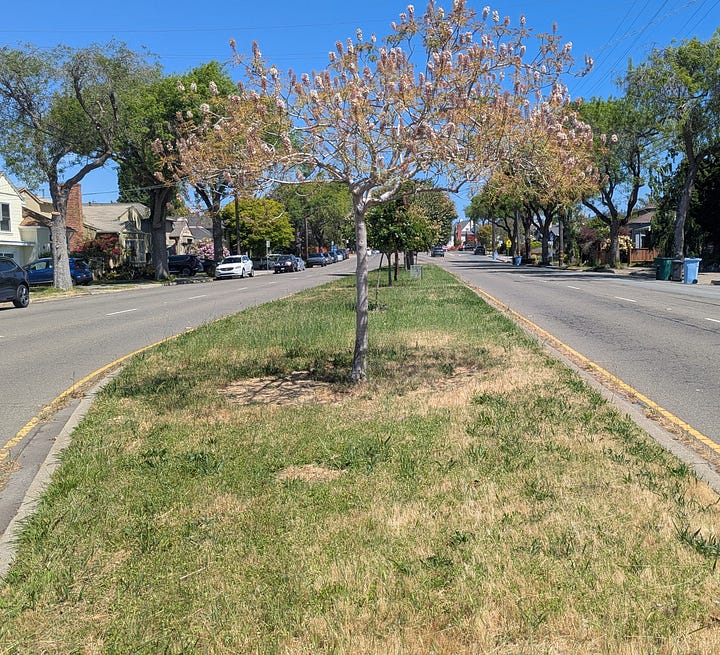
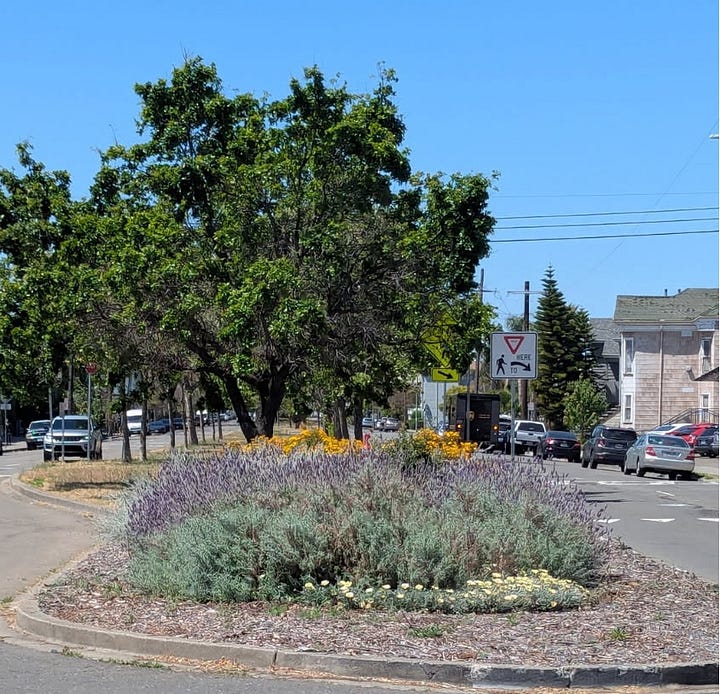
Hopeful Headlines
Happy Mother’s Day: Right whale mom not seen in three years reappears
A critically endangered female North Atlantic right whale that was last seen with a severe entanglement three years ago was spotted with a group of more than 75 whales off the Massachusetts coast in April. “Calvin” was born in 1992 and has given birth to four calves. Breeding females are the future for this species. Only 370 individuals remain, according to the last count. Make that 371.
“A lot of people had given up hope that she was still alive after not being seen for so long,” said Katherine McKenna, an associate research scientist with the National Oceanic and Atmospheric Administration (NOAA). “Calvin’s story illustrates the resiliency of right whales. However, their resiliency alone is not enough for this species to recover. We must reduce the sources of human-caused mortality and injury that are preventing the right whale population from thriving.”
Ship strikes and entanglement in Maine lobster fishing gear are the main causes of the right whale’s failure to recover. For this reason, Maine lobster is listed on Seafood Watch’s red list as “do not buy.”
California: Klamath River bursts with wildflowers where dams once stood
A massive restoration effort is underway to build soil and a native plant ecosystem on land that was underwater for 100 years. The last of four dams along the Klamath River in Northern California were removed last fall.
From the Yurok Tribe (don’t miss the wildflower photos in the link):
Last fall, the Yurok Fisheries Department’s Revegetation Crew … hand planted millions of native seeds on 500 acres of land in the footprints of the former reservoirs. The project included 43 native, drought resistant flowering herbs, forb and grass species, such as western goldenrod (Euthamia occidentalis), California Lomatium (Lomatium californicum) and blue wild rye (Elymus glaucus).
“These plants germinated in the fall and grew a few inches before winter. They were covered in snow and continued to grow. Now, the plants’ roots are deep enough to withstand the summer heat and produce seed for next year,” said Yurok Fisheries Department’s Senior Riparian Ecologist Joshua Chenoweth.
India sees a future making solar panels for itself, and maybe the world
Hoping to spur a clean energy manufacturing boom, the government is offering lucrative subsidies for locally produced solar cells and batteries, and it is restricting foreign products in its biggest renewable-energy projects. To cash in on government contracts to install rooftop solar for 27 million households by the end of this decade, for instance, companies must make the panels at home.
Captive-bred axolotls thrive in Mexican wetlands, researchers find
From NPR:
Fans of the iconic axolotl could see the critically endangered species stage a comeback in its native Mexico City, as researchers announced their findings that captive-bred axolotls can survive in the wild.
Arizona: Weed Manager of the Year: One Man’s Quest to Save the Sonoran Desert
From The New York Times:
Mr. Pike is at war with buffel grass and fountain grass, two invasive species that are spreading in the Sonoran Desert, choking native plants, increasing the risk and intensity of wildfires and threatening a vibrant ecosystem.
United Kingdom: 1,700 sheep walked through solar panels, and their wool is higher quality
From Glass Almanac:
At the Wellington Solar Farm in New South Wales, researchers partnered [observed] 1,700 merino sheep over a period of three years. The animals were split into two groups: one grazed on traditional pastures, while the other roamed between rows of solar installations.
The aim was to assess whether this unique environment had any impact on the sheep’s health and wool quality. The results, published in early 2025, caught everyone off guard: sheep grazing beneath solar panels produced wool that showed stronger fibers and, in some cases, increased growth.
First-of-its-kind Hawaii bill raises tourist taxes to fund climate relief
From The Guardian:
Officials estimate the tax will generate nearly $100 [million] annually. They say the money will be used for projects like replenishing sand on eroding Waikiki beaches, promoting the use of hurricane clips to secure roofs during powerful storms and clearing flammable invasive grasses like those that fed the deadly wildfire that destroyed downtown Lahaina in 2023.
… “The more you cultivate good environmental policy, and the more you invest in perfecting our lived space, the more likely it is we’re going to have actually lifelong, committed travelers to Hawaii,” [Governor Green] told the Associated Press.
Africa: Grey Crowned Cranes Recover in Rwanda
A decade ago, there were only 300 grey-crowned cranes in the wild in Rwanda. Now, there are over 1,300. Olivier Nsengimana set up the Rwanda Wildlife Conservation Association to rescue cranes from captivity and train community members in helping to protect the birds.
I shared this story from Mongabay last week but wanted to come back to the video within it, because something Olivier Nsengimana says has stayed with me all week as I contemplate how to rewild the weedy median:
“When I started, the problem felt just too huge. But now, I’m surrounded by a great team of colleagues and community conservationists. I feel I can do anything.”
— Olivier Nsengimana
The median project sometimes seems “too huge.” My imagination keeps going wild, where I build a website and a national call for everyone to host a little milkweed in their yard or convert “unused” spaces for “milkweed madness.” Monarch numbers have plummeted in the last 20 years, likely due to pesticide use and habitat loss on lands that are used for agriculture. Urban spaces could be part of the solution.
When I start to think my plans are “too huge,” I go back to a question my young daughter asked one day as she helped me pull up a small patch of sod in the median.
“What if this doesn’t work?” she asked.
“What if what doesn’t work?” I said.
“What if the city doesn’t let you do this, or they mow it down, or the flowers don’t come up?”
“We start small. With anything in life, we can start small, see what happens, and then grow bigger. Test and learn.”
About Earth Hope:
Earth Hope is a solutions-based journalism project that highlights environmental success stories to inspire action. I’m Amanda Royal, a former newspaper reporter and current eco-news junkie. Read more about this project and what inspired it.
Visit earthhope.substack.com for more stories. Visit my Services page if you’re a writer who’d like some help figuring out Substack.






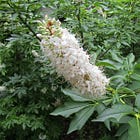
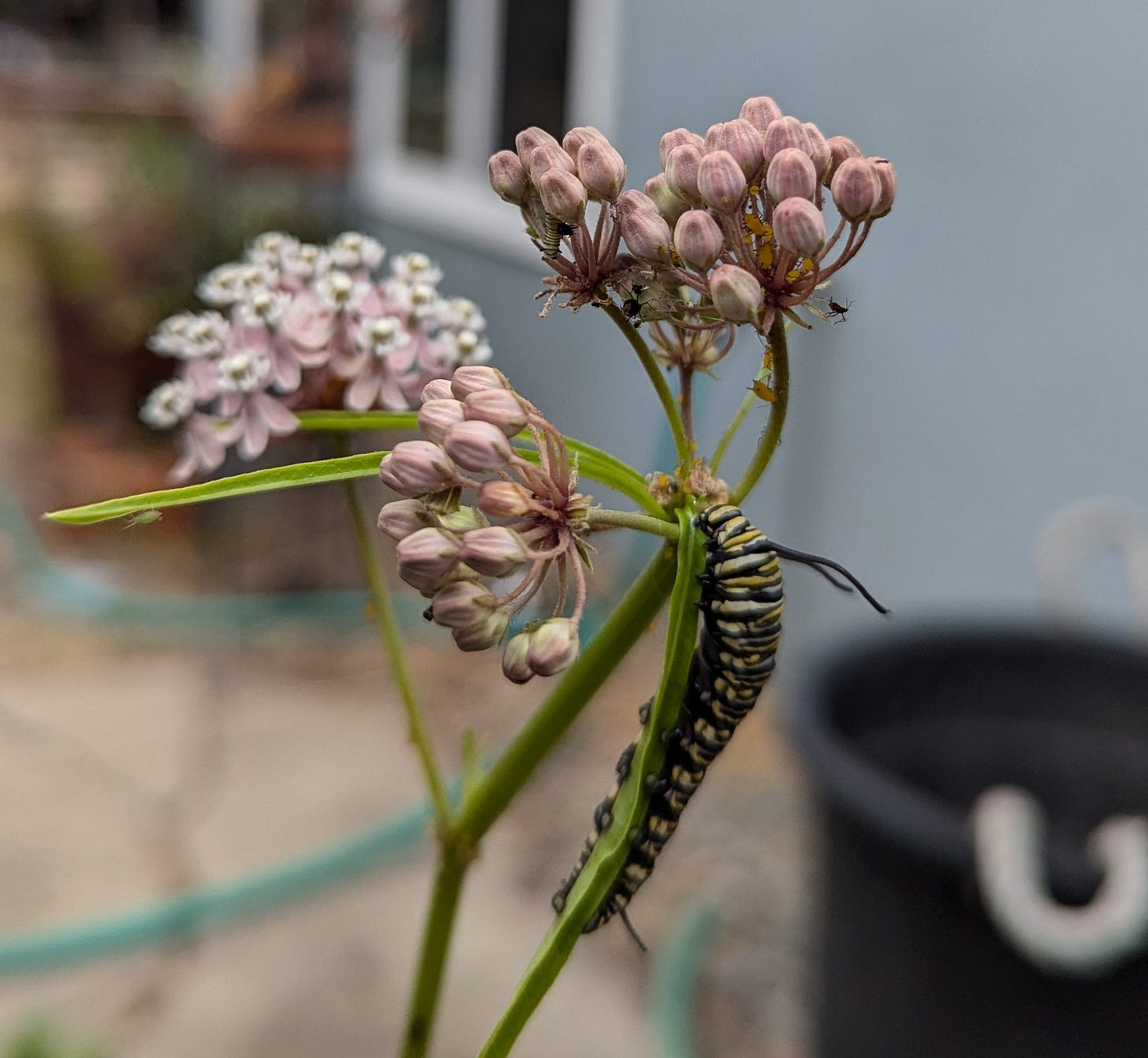


Amanda, I love how you connect your local rewilding project with global efforts. Listening to Mr. Nsengimana’s words, seeing the beautiful cranes—it brings me joy and hope that concerned people, acting together, can truly be the saviors of many species and ultimately, of earth itself. Keep fighting to get the native plants into your median strip. If you build it, the monarchs will come.
Best of luck on your median project! I’m rooting for you 🩶